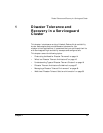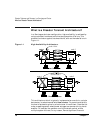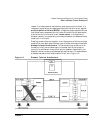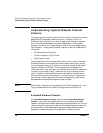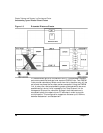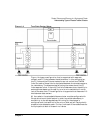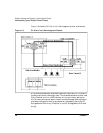
Disaster Tolerance and Recovery in a Serviceguard Cluster
Understanding Types of Disaster Tolerant Clusters
Chapter 118
Understanding Types of Disaster Tolerant
Clusters
To protect against multiple points of failure, cluster components must be
geographically dispersed: nodes can be put in different rooms, on
different floors of a building, or even in separate buildings or separate
cities. The distance between the nodes is dependent on the types of
disaster from which you need protection, and on the technology used to
replicate data. Three types of disaster-tolerant clusters are described in
this guide:
• Extended Distance Clusters
• Cluster Extension (CLX) Cluster
• Continental Cluster
These types differ from a simple local cluster in many ways. Extended
distance clusters and metropolitan clusters often require right-of-way
from local governments or utilities to lay network and data replication
cables or connect to DWDMs. This can complicate the design and
implementation. They also require a different kind of control mechanism
for ensuring that data integrity issues do not arise, such as a quorum
server. Typically, extended distance and metropolitan clusters use an
arbitrator site containing a computer running a “quorum” application.
Continental clusters span great distances and operate by replicating
data between two completely separate local clusters.
NOTE Continental clusters are not supported with HP Serviceguard for Linux.
They are described here to show the range of solutions that exist.
Extended Distance Clusters
An extended distance cluster (also known as extended campus
cluster) is a normal Serviceguard cluster that has alternate nodes
located in different data centers separated by some distance, with a third
location supporting the quorum service. Extended distance clusters are
connected using a high speed cable that guarantees network access
between the nodes as long as all guidelines for disaster tolerant






